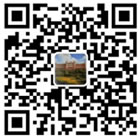转发:生命科学院学术报告
Nature Bank: a Platform for Biodiscovery
题 目: Nature Bank: a Platform for Biodiscovery
主讲人: Ronald Quinn 教授(澳大利亚科学院院士,格里菲斯大学教授)
时 间: 4 月 16 日(星期二)上午 9:30-11:30
地 点: 东校区行政楼 B 座一层讲学厅 101
主持人: 张 雁 教授
主办单位:生命科学学院
有害生物控制与资源利用国家重点实验室
简介: Ronald Quinn 教授 1970 年获澳大利亚新南威尔士大学博士学位,在美国亚利桑那州立大学、夏威夷大学和澳大利亚国立大学完成博士后研究,而后在悉尼罗氏海洋药理研究所工作, 1982 年入职格里菲斯大学, 1994 年被评为教授并任 Eskitis 细胞与分子研究所所长, Ronald Quinn 同时也是中南民族大学药学院名誉教授,至今发表了 200 多篇文章,并拥有多项发明专利, 2003 年被评为澳大利亚科学院院士。
摘要: Our research has concentrated on the isolation of bioactive constituents and their development towards therapeutic applications. The eventual prosecution of a lead compound ultimately depends on the drugability of the molecule. Addressing drug-like/lead-like properties of biologically active small molecules early in a cancer lead generation program is the current paradigm within the drug discovery community. Lipinski's "rule of five" is one of the most commonly used tools to assess the relationship between structures and drug-like properties.
Over the last couple of years, we have addressed the question whether natural products display the physicochemical properties required in orally acting pharmaceuticals. In this area, we have published our work in developing a drug-like natural product library with properties that comply with Lipinski rules for orally active drugs.
We have front-loaded lead-like property space in natural product drug discovery programs by developing "Nature Bank", a library of 202,983 fractions from 18,453 plant and marine samples collected from mega-diverse areas of tropical Queensland, Tasmania, Papua New Guinea and China. Nature Bank contains drug-like molecules separated into mixtures of a small number of compounds allowing the rapid identification of active molecules using modern chemical methods. This lecture will discuss how this knowledge may be applied to biodiscovery efforts.



